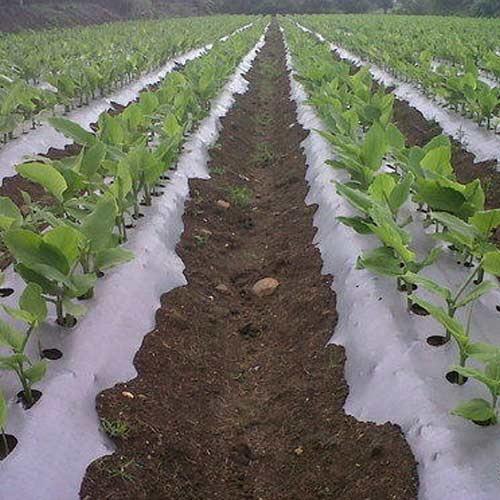
Plastic Mulching Film
120.00 - 175.00 INR/Kilograms
Product Details:
X
Plastic Mulching Film Price And Quantity
- 120.00 - 175.00 INR/Kilograms
- 500 Kilograms
Plastic Mulching Film Trade Information
- 20000 Kilograms Per Day
- 2 Days
Product Description
Plastic mulching film is a thin layer of plastic sheeting that is used in agriculture to cover the soil in order to improve crop growth and control weeds. It is commonly made from high-density polyethylene (HDPE) or low-density polyethylene (LDPE) materials and is available in various colors such as black, silver, and transparent. The film is laid on the soil surface, creating a barrier that helps conserve moisture, control temperature, and suppress weed growth.
Frequently Asked Questions:
Q: What are the benefits of using plastic mulching film?
A: Plastic mulching film offers several advantages, including:
- Weed suppression.
- Moisture conservation.
- Temperature regulation.
- Improved crop quality.
Q: What types of crops benefit from plastic mulching film?
A: Plastic mulching is commonly used in a wide range of crops, including vegetables (such as tomatoes, peppers, and cucumbers), strawberries, melons, and ornamental plants. It can be beneficial for both annual and perennial crops.
Q: How is plastic mulching film applied?
A: The film is typically laid over prepared soil, which is then secured with soil anchors or covered with additional soil along the edges to prevent wind displacement. Planting holes or slits are made in the film to accommodate the seedlings or transplants.
Q: Can plastic mulching film be reused?
A: While plastic mulching film can be reused in some cases, it is generally designed for single-season use. Factors such as film thickness, tear resistance, and overall condition after removal determine its potential for reuse.
Q: Are there any environmental concerns associated with plastic mulching film?
A: Plastic mulching film is not biodegradable and can contribute to plastic waste if not properly managed. However, efforts are being made to develop biodegradable and compostable alternatives to address this concern.
Q: How should plastic mulching film be disposed of?
A: Proper disposal methods include recycling the film at facilities equipped to handle agricultural plastics or following local waste management guidelines. Burning or burying the film should be avoided to prevent environmental harm.
Tell us about your requirement

Price:
Quantity
Select Unit
- 50
- 100
- 200
- 250
- 500
- 1000+
Additional detail
Mobile number
Email

 English
English Spanish
Spanish French
French German
German Italian
Italian Chinese (Simplified)
Chinese (Simplified) Japanese
Japanese Korean
Korean Arabic
Arabic Portuguese
Portuguese





 Call Me Free
Call Me Free
